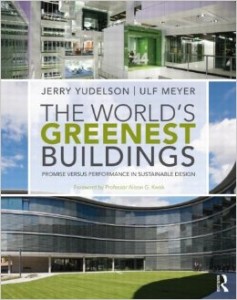Shortly after Regents Hall came on line at St. Olaf in September 2008, the College was approached by the US Green Building Council to see if it would approve the building being included in The World’s Greenest Buildings, Promise to Performance in Sustainable Design, which was being put together by Jerry Yudelson and Ulf Meyer. Yudelson and Meyer looked at all of the green building rating systems from around the world, and picked 25 projects that actually delivered on their promise. Yudelson is probably the inventor of the concept of sustainable design, certainly one of them.
Regents Hall of Natural Sciences was opened in September of 2008 after an eighteen month construction period. It achieved LEED Platinum certification at an all in project cost of $335 per square foot.
Regents is a design-build project of $64,000,000 and 190,400 sf. It houses Biology, Chemistry, Physics, Psychology, and Environmental Studies. The DB core team was Boldt Construction, Holabird and Root Architects, and St. Olaf Facilities. Design was guided by the St. Olaf Sustainable Design Guidelines, and the process was intensely collaborative. St. Olaf Facilities staff, building constituents, lead sub-contractors, Boldt and Holabird and Root came together before any lines were on paper to bring design up together. Estimating was done in real time, and it responded to a schedule of values developed by St. Olaf at the beginning. With Lean as a primary emphasis, the artificial start/stops of Schematic Design, Design Development, and Construction Documents, were thrown out. No technical GMP was ever established; rather, the College established the maximum number it was willing to spend, and the team achieved it, beating RS Means projections for Minneapolis/St. Paul over the design and construction period by about $5,000,000.
The building performs 75% better than if it was just built to the Minnesota Energy Code. The DOE2 energy analysis at programming predicted it would consume 8,400,000 KWH per year if designed to code, and in practice it is operating at about 2,200,000. The power is supplied by an on campus 1.65 MW wind turbine, and there is more than enough excess generation to off-set the minimal heat requirement, making the joint turbine/building project better than net-zero. Except for a couple of LEED pre-requisites, it is the building the College would have built without regard to LEED.

You must be logged in to post a comment.